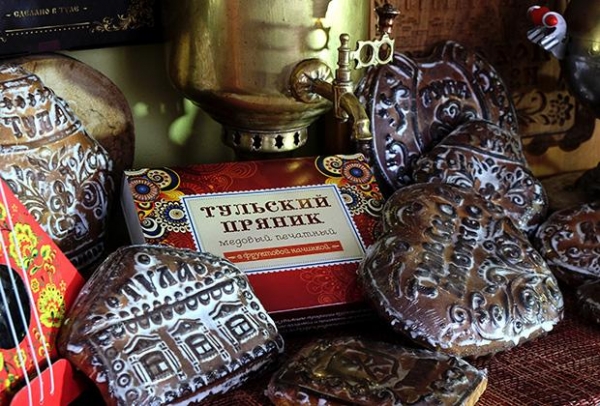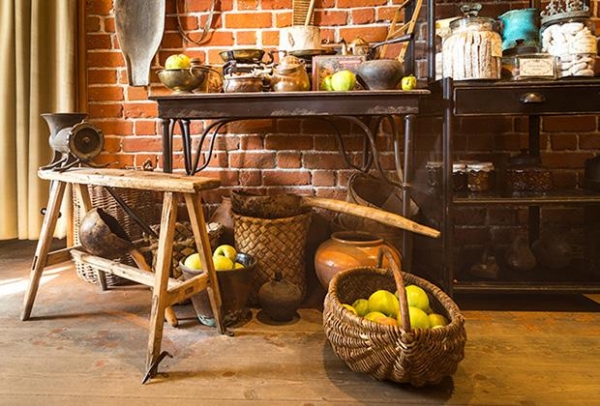
METS President Leonid Gelibterman about the phenomenon of gastronomic tourism
The President of the International enogastronomic center, Vice-President of the Federation of restaurateurs and hoteliers of Russia, member of the expert Council on food tourism, the world tourism organization, and travel writer Leonid Gelibterman said “the Tape.<url>” about the national cuisine as the anti-globalization phenomenon, the way of understanding the world, seeking the roots of and motivation for the journey.
“Ribbon.ru: Leonid Vladimirovich, first of all, let’s define the concepts. What is gastronomic tourism? What is the difference between culinary tourism and the role of gastronomy for tourism?

Leonid Gelibterman
Photo: courtesy of Leonid Gelibterman
Leonid Gelibterman: a Clear definition of what is considered gastronomic tourism does not exist. This problem is visible even at the linguistic level. For example, studies in the US show that people understand completely different things under these seemingly similar concepts as food tourism, culinary tourism, or gastronomy tourism. I think that for Russian-speaking audience the situation is roughly similar.
In my opinion, under gastronomic tourism in the strict sense of the word should be understood:
• special wine and gastronomic tours;
• visits of gastronomic tourism (specialized museums, dairies, wineries, Breweries, etc.);
• visit restaurants with regional cuisine;
• visit cooking courses in hotels, as well as specialized culinary centers and schools;
• visit to farms;
• visit to agricultural (farmer’s) markets;
• food exhibitions and fairs;
• food and wine (beer etc.) festivals.
But with regard to the role of the gastronomic component of the tourism, as you know, food is one of the few pleasures available to man all his life”. This statement belongs to the great Russian scientist, the Nobel prize in physiology or medicine Ilya Mechnikov, and it perfectly reflects the role of the gastronomic component in our lives, including during travel.
According to the world tourism organization (UNWTO, the study Global Report on Food Tourism), 79 percent of travelers build up a route, after analyzing the calendar of gastronomic events and features local cuisine. Every third tourist in the world considering the national cuisine as an important component of motivation to travel, and food accounts for about 30 percent of the total cost of the trip.

Every third tourist in the world considering the national cuisine as an important component of motivation to travel
Photo: courtesy of Leonid Gelibterman
Level regional food determines the quality of rest as a whole, satisfying not only physiological, but also social needs of travelers. Through gastronomy we understand the local culture and way of life in the new territories. According to UNWTO research, 88,2% of the respondents believe that gastronomy is an important part of the brand territory. According to my colleagues, a Mexican expert on tourism of the world tourism organization (UNWTO) Maria Isabel Ramos Abascal, it is important not just to combine the culture and natural wealth of the region “on a plate”, but remember that the goal of any journey is first of all contacts between people.
Tourists need to be fed. Mass tourists must be fed more and quickly, and inexpensively. But the most advanced in the gastronomic tourism in the regions include standard traditional lunch of local dishes, which can cause the tourist interest in further study of the local gastronomic specialities.
What is the place of gastronomic tourism is in a number of other tourist destinations? What is the similarity between them and what is the fundamental difference?
If we talk about culinary tourism in its purest form, when of fuddi ready to go to Namibia for oysters from Swakopmund or to New Zealand for Manuka honey, this is a very narrow niche in tourism. It certainly exists, but does not define a trend.
Let’s look at the situation on the example of event tourism. In my opinion, in Russia there are the following types of event tourism:
• state (regional) holidays and associated events;
• sporting events (Olympics, world Championships, Europe, Russia, the major international tournaments);
• music festivals and competitions;
• film festivals;
• theatre festivals;
• beauty contests;
• fashion shows;
• exhibitions, fairs, festivals, exhibitions;
• business forums, conferences, assemblies, congresses;
• the congresses of political parties.
In the case with the specialized exhibitions, fairs, festivals and dedicated to regional holidays events we can speak directly about gastronomic tourism. Otherwise we are talking about event tourism with a particular gastronomic component. Overall, I’m not a supporter of the dividing strips between different types of tourism. Gastronomic tourism in varying degrees, is an element of any type of tours. Moreover, familiarity with national (regional) cuisine and products in a specific territory may become the main motive for the trip.

Familiarity with the products in a specific territory may become the main motive of the trip
Photo: courtesy of Leonid Gelibterman
Today gastronomic tourism is clearly in Vogue. What is connected with its rapidly growing popularity worldwide?
First, change the traditional consumption of food. We are increasingly eating outside the home. The trip to the restaurant ceased to be an outstanding event. And interest in new tastes and cuisines calls for discovery and travel.
Secondly, is greatly influenced by globalization. In the modern world distances are shrinking, space is compressed. In the supermarket two steps away from the house you can find products from different climatic zones located on different continents. However, globalization strangely arouses interest in his own roots. Modern man is in search of self-identity, including through its national cuisine, using local gastronomic traditions.
The growing interest in food tourism is affected by a positive image of the promoted brands and gastronomic regions such as Provence, Tuscany, or Georgia, Parmigiano, ham, Chinese tea, Uzbek pilaf, ceviche, as well as touring star chefs, some of which long ago turned into real showmen.
It is significant that 88.2 percent of respondents perceive gastronomic tourism as a strategic element of the brand image of the region, and the attractiveness of local cuisine and high level of service in catering — the most important motive in buying a home abroad.
Gastronomic tourism is very important for the economy, it creates infrastructure and jobs, allows to preserve national cultural traditions and even to revive the backward areas. Do not forget that UNESCO has recognized gastronomy is part of the historical and cultural heritage of humanity.

Gastronomic tourism has a big impact on the local economy
Photo: courtesy of Leonid Gelibterman
What are the main global trends (in the context of supply and demand) in the development of gastronomic tourism?
The global market for food tourism is estimated at $ 42 billion. There are some leaders, of course. In Europe, for example, France, Italy, Spain. In Asia for the title of gastronomic capital desperately fighting Singapore and Hong Kong. And all this from the side with a smile looking towards Japan, because only in Tokyo there are 217 Michelin restaurants. These gastronomic giants back India, Thailand, South Korea. There is a growing demand for gastronomy tourism in Latin and South America, primarily in Peru and Mexico. It is no coincidence that in Lima in may of 2016 hosted the Second global forum of the world tourism organization of the United Nations on food tourism.
Gastronomy tourists are ready to overcome many thousands of miles to try them for exotic food and drinks. The biggest fans of this kind of travelling have proven to be Germans, British, Americans and Japanese.
Actively attract gastronomic tourists are the Italians. The gastronomic heritage of Italy has about five thousand of typical dishes prepared according to traditional recipes for at least 25 years. The Apennine Peninsula is 1438 kinds of bread and pasta, 764 varieties of ham and 472 varieties of cheese. Many products are certified DOP (Protected denomination of origin), IGP (Protected geographical origin) and STG (Guaranteed traditional typical product). This diversity, of course, contributes to the development of gastronomic tourism in Italy, the number of fans which is growing every year both among foreign visitors and among the Italians themselves. According to the National control of Italy for tourism, not less than 10 per cent of tourists arrive on the Apennine Peninsula to participate in various gastronomic and wine tours.

There is a growing demand for gastronomy tourism in Latin and South America
Photo: courtesy of Leonid Gelibterman
Two-thirds of Britons said their decision about where to go to rest, in varying degrees, affects the ability to eat well and to drink. Residents of Foggy Albion not alone in this. If we talk about the demand for gastronomy tourism, it is, as I said, is growing not only among the “Golden billion”.
How new gastronomic tourism for our country? Is there a historical retrospective? Whether it is developing today, drawing on this tradition, or formed on other grounds? If other, then what is it?
Gastronomic tourism for Russia is not a new phenomenon, with a pretty solid history. This is evident, for example, literary heritage. In Pushkin’s letters to the Sobolev has the following lines:
From Gal’yani Il Colony
Get yourself in Tver
Parmesan macaroni
Yes, the eggs cook.
Or here’s another:
At leisure autobody
At Pozharsky in Torzhok,
Fried meatballs taste
And go light.
The Foundation of the Russian gastronomic tourism can, and should, serve historical roots. Take for example this well-known product as gingerbread. Gingerbread in Russia did the printing when the top was made special gingerbread Board (printing), to set the pattern; notched (cutout) in the shape of animals, etc.; stucco — Arkhangelsk kozuli.

The gunners have managed to create a stereotype: if the carrot, that he Tul
Photo: Andrew Varenkov / RIA Novosti
In Moscow there were cakes with lime honey and molasses. In Tver and mint cakes. Print the gingerbread was mentioned by Pushkin in “the Tale of the fisherman and the fish”. Alyosha Popovich with the guests at Prince Vladimir “was taught good fellows have printed gingerbread, drink their wines overseas.” The sheep merchant from Tver, a seller of gingerbread, kept stores in Paris, London and Berlin. This is the story.
Nowadays the historical context of the gingerbread uses active all Tula. The town has a gingerbread Museum, attracting numerous visitors. And most importantly, the gunners have managed to create in the minds of Russians stereotype: if the carrot, that he Tula. And formed at the Federal level, regional gastronomic specialities.
Another example — the famous Kolomna pastila. It is very fond of Catherine II, wrote about her Dostoevsky. In 2009 in Kolomna opened a Museum of pastes, which as a result of research and recovered technology, you can try a whole collection of forgotten flavors, about 20 types of pastes, including favorite candy of Fyodor.
The town of Belev in the Tula region at the time was known in Europe as the supplier of Apple pastila. Now beleva several companies active in the market for the vast majority of the Russian regions, sell their product in Europe and facilitate the arrival of tourists to the city.
If you look at world experience, what, in your opinion, the main difficulties in the development of gastronomic tourism? What needs to be done for the successful development of this direction of tourism in our country now?
As I said earlier, in the world there is a small group of countries where gastronomic tourism has become steadily working in the industry brings significant income to the Treasury and developing the regional economy. In the Basque culinary center in the fall, I will begin training the first group of students who will receive the degree “Master of gastronomic tourism. But for the vast majority of countries, gastronomic tourism remains a Terra Incognita.
Science and methodology seriously lag behind the real needs of the industry. According to the results of the forum in Lima, experts UNWTO summarize the results of discussions and performances. I believe that soon will be released a special report, which can be used as a practical guide to action.

In the Kolomna pastila Museum, you can try a whole bunch of forgotten tastes
Photo: “the Museum of Kolomna pastila”
As for Russia, the work here no end. First we need to consolidate the efforts of concerned ministries and departments such as the Ministry of culture, the Ministry of industry and trade, the Ministry of agriculture, Ministry of economic development, Ministry of foreign Affairs, Rossotrudnichestvo, the Federal Agency for tourism, authorities of subjects of Federation, public associations, such as the Frio, the national culinary Association, Guild of chefs, the Union of winegrowers and winemakers of Russia, the national Association of keepers of the gastronomic heritage and tourism “Focus”, related higher education institutions. And to attract hoteliers, restaurateurs, food producers and drinks, representatives of tourist business, Museum workers, historians, ethnographers.
What regional cuisines/local food traditions/original dishes of Russian (and not only) cuisine, the focus should be primarily to successfully represent Russia in the world as an extremely interesting destination for gastronomic tourism?
To this question I have no simple answer. It is obvious that it is necessary somehow to use a vodka theme. I think that you should pay attention to the few dishes that are associated in the world with Russia. I mean beef Stroganoff, Russian salad, soup, dumplings, pancakes with caviar. But let’s not forget that Russia is home to about 180 people, and each has its own unique gastronomic traditions and cuisine. All the foreign experts with whom I discussed this issue in one voice saying: “Sell your unique diversity”.

Pancakes with caviar are strongly associated foreigners with Russia
Photo: seqoya / Depositphotos
Is there now a successful gastronomic tourism projects in Russia?
Yes. First, I would like a complex project, created in Abrau-Dyurso (Krasnodar Krai). A lot of great projects in the Altai region, Tver and Tula regions, in the Urals. Practically in each subject of the Russian Federation has its own gastronomic events: the festival of Circassian cheese, Circassian day, pears, a feast of carp in the Novosibirsk region, the goose festival Shadrinsk in Kurgan, “Rostov the Great ear” in the Yaroslavl region, the Tambov potatoes feast, the feast of tomato in Syzran and the festival “Zhigulevskoye cherry” in the Samara region, “His Majesty Cucumber” in the Smolensk region, the festival of cabbage in the Chuvash Republic, “Boil porridge” in Kashin (Tver oblast), Buuz holiday in Buryatia, “Sol-Iletsk watermelon” in the Orenburg region, Balakovo the strawberry festival, “ranenburgskiy feast” in the Lipetsk region, “Sheep Sunday” in the Arkhangelsk region and many others. There is even an Internet draft “a Gastronomic map of Russia”. But the complete objective information on this subject has not, as far as I know, no one.
Who and how creates or should create a new product in the field of gastronomic tourism? What is the role of the state, tourism organizations, private businesses?
The product in the field of gastronomic tourism in our country must be created by joint efforts of authorities and private business. Should work much desired, but seldom realized in practice, public-private partnership.
As you know, the sanctions suddenly stirred interest in local products and local cuisine. If not interrupted this process with their abolition?
The interest in local products and regional cuisine — a global trend, and Russia is no exception. Cancellation of globalization does not threaten us, and that means people will not weaken the desire to seek their roots, to identity through culture, including gastronomy.








